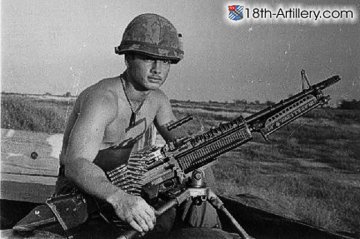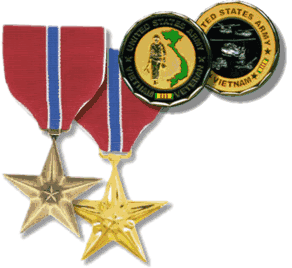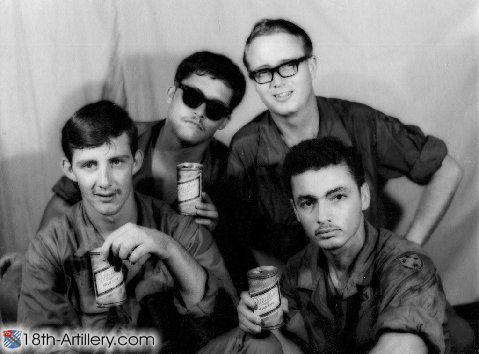 18th Artillery Group Association Member 18th Artillery Group Association Member
Luis Vega
- Luis Vega is a native of the island of Puerto Rico. He was drafted while attending the University of Puerto Rico on January 1969.
- He went through basic training at Fort Gordon, Georgia and attended Advance Individual Radio Telegraph Operator Training at the U.S. Army Strategic Communications Command in Fort Huachuca, Arizona and Radio Teletype Operator (05C) School at Fort Gordon, Georgia.
- Deployed to Vietnam on September 1969 and assigned to Ist Infantry Division, performed numerous assignments and participated in operations around Di An, Lai Ke and Phu loi.
- Was promoted to Sergeant on January 1970 and transferred to the Americal Division, 3/18 artillery on March 1970. Stationed at LZ Cindy, Tra Bong was in charge of RTT communications until September 1970, when he returned home for discharge at Fort Lewis, Washington.
- Sergeant Vega's decorations include two Bronze Star Medals awarded for meritorious achievements against hostile forces in the Republic of Vietnam.

1970 at Chu Lai, Luis Vega lower Right - "I met those three other soldiers briefly one night in Chu Lai while I was waiting for deployment orders to go to LZ Cindy and never saw them again".

Pictures Below
A crashed C-7 Caribou: In that one you can see Capt Sánchez walking towards the aircraft. That picture was taken in August 1970, but that was not the date of the accident.
It happened this way: A couple days before, this aircraft crashed on our very short runway (some say that it was the shortest runway in Vietnam) and a flying crane helicopter was sent to lift the C-7 and take it back for repairs, but the repairs were not needed when the cable broke as the aircraft was about 200 feet in the air and came crashing down. I was present when the original accident happened and was with Capt Sánchez watching the recovery operation during which the C-7 got totaled. I even took a picture of the Caribou falling, and some day, when I find it, I will send it to you. That was my first aircraft accident and nobody told me that I was going to spend the next 30 years as a civilian working an Aircraft Rescue Firefighter at an airport.
There is a picture of Gary Wohl, the other RTT operator for A Battery and a couple of Duster action shots.
For me the army was not a career. For me it was more like an accident. It happened when I dropped from a statistics class and I fell below the minimum amount of credits (12) to remain exempted from drafting. I dropped the class close to the end of my second year’s first semester thinking that by the time that the selective service got the information, I would be registered for my second semester with a full program. Well I did not work that way and the rest is history. I stayed in the army for two years, went to Vietnam and when I got back I started living one day at a time.
Most of the soldiers were too young to understand the kind of danger to which all of them were exposed. Yes, we had two M107 self-propelled 175-mm. guns, two M110 8-inch howitzers and two 40 mm. Dusters for direct fire. That gives you some confidence, but the determination of the Vietnamese could not be “out gunned” in any way. If you don't believe me, look at what happened at the end. You cannot win a war by controlling the air, but you also have to control the territory.
The first time I heard the term "Big Battle" referring to the battle at Tra Bong was from Charles. It was one of the last, if not the last battle fought in Nam. The same day the battle got hot, I was pulled out of Cindy and missed most of the action there. Included is a letter that was send to me by Gary Wohl a couple days after and was kept from me for months by my mother.
|